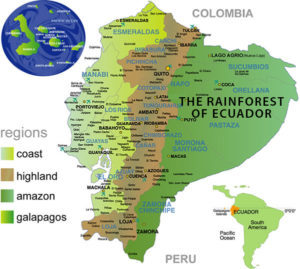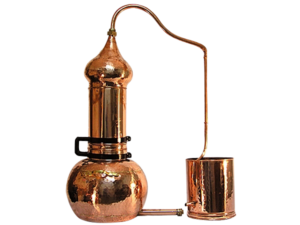
Essential Oil and Medicinal Herb Processing
Please Note:
This page was originally written when the intention was to locate the Institute in Ecuador. While the climatic zones and plant data differ for other regions of the world, the text is being left as originally posted since it provides insight into the reasons for preserving herbal traditions as well as why we also need to study the herbs in the context of the modern world. That said, the Institute is no longer focused on Ecuador.

According to databases on plant species, about 40% of the plant species known to the world grow somewhere in one of the four major climatic zones of Ecuador. Of these, only a very few have recognized value. For example, a study of all major essential oils used therapeutically, only one is listed as sourced from Ecuador, palo santo. If we look at agricultural exports, we find coffee, cacao, golden berries, and perhaps a few more exports, almost no medicinal herbs enjoy a viable market even though Ecuador is clearly a treasure chest for such plants.
 The main zones in Ecuador are the largely pristine and protected Galapagos Islands, the Coastal Lowlands, Amazon Jungle, and the Andean Highlands. Though equatorial, the elevations go from sea level to the summit of the majestic, snow-capped Chimbarazo Volcano at 20, 548 feet (6248 meters). There are areas of steaming jungles and freezing cold winds.
The main zones in Ecuador are the largely pristine and protected Galapagos Islands, the Coastal Lowlands, Amazon Jungle, and the Andean Highlands. Though equatorial, the elevations go from sea level to the summit of the majestic, snow-capped Chimbarazo Volcano at 20, 548 feet (6248 meters). There are areas of steaming jungles and freezing cold winds.
In short, there are many zones as well as microzones with unique characteristics, and practically anything can grow in Ecuador if planted in the right place.
Looked at from another perspective, there is also a vast medicine chest about which very little is known outside of various ethnic traditions, many of which have been well-preserved in Ecuador. However, as with every area that has been influenced by modernity, some traditions are at risk of fading and along with their demise, there is a potential loss of valuable knowledge of herbal medicines.
There is a good and a bad side to this situation. Bio-piracy is not as rampant as in some places in the world, and yet research into how each of the cultures in Ecuador use herbs is sparse. To operate a proper clinic where treatment depends In large part on herbal medicine, there must be sources for the herbs as well as proper knowledge of the uses of each herb.
 Dr. Ingrid Naiman is the author of a major book on botanical cancer treatments and has been keeping a map of plants with anti-cancer properties for over thirty years. While her book covered historic treatments, more or less from Hildegard of Bingen to contemporary times, the emphasis was on Native American treatments. She also developed a product line of herbal formulas for cancer, parasitic infections, immune enhancement, fungal infections, detoxification, and DNA repair. What is unique about her product line is that most of the herbs have been studied in darkfield microscopy in actual clinical settings so that the precise mechanism of action on plasma, erythrocytes, white blood cells as well as pathogens is understood.
Dr. Ingrid Naiman is the author of a major book on botanical cancer treatments and has been keeping a map of plants with anti-cancer properties for over thirty years. While her book covered historic treatments, more or less from Hildegard of Bingen to contemporary times, the emphasis was on Native American treatments. She also developed a product line of herbal formulas for cancer, parasitic infections, immune enhancement, fungal infections, detoxification, and DNA repair. What is unique about her product line is that most of the herbs have been studied in darkfield microscopy in actual clinical settings so that the precise mechanism of action on plasma, erythrocytes, white blood cells as well as pathogens is understood.
So while uniquely qualified to pursue the proposed work in Ecuador, everything depends on supply, and this is where Kitzia Kokopelmana comes into the picture. It is Kitzia who will actually oversee the medicinal gardens where seeds are planted to create biodiversity as well as herbal medicines for processing in state of the art laboratories in Ecuador.

Privacy Policy || Report Technical Problems || Permission to Quote || Job Opportunities
Copyright Dr. Ingrid Naiman @ 2014-2020. All Rights Reserved.
For permission to quote, please contact the Institute for Invisible Epidemics.
Poulsbo, Washington, USA.
